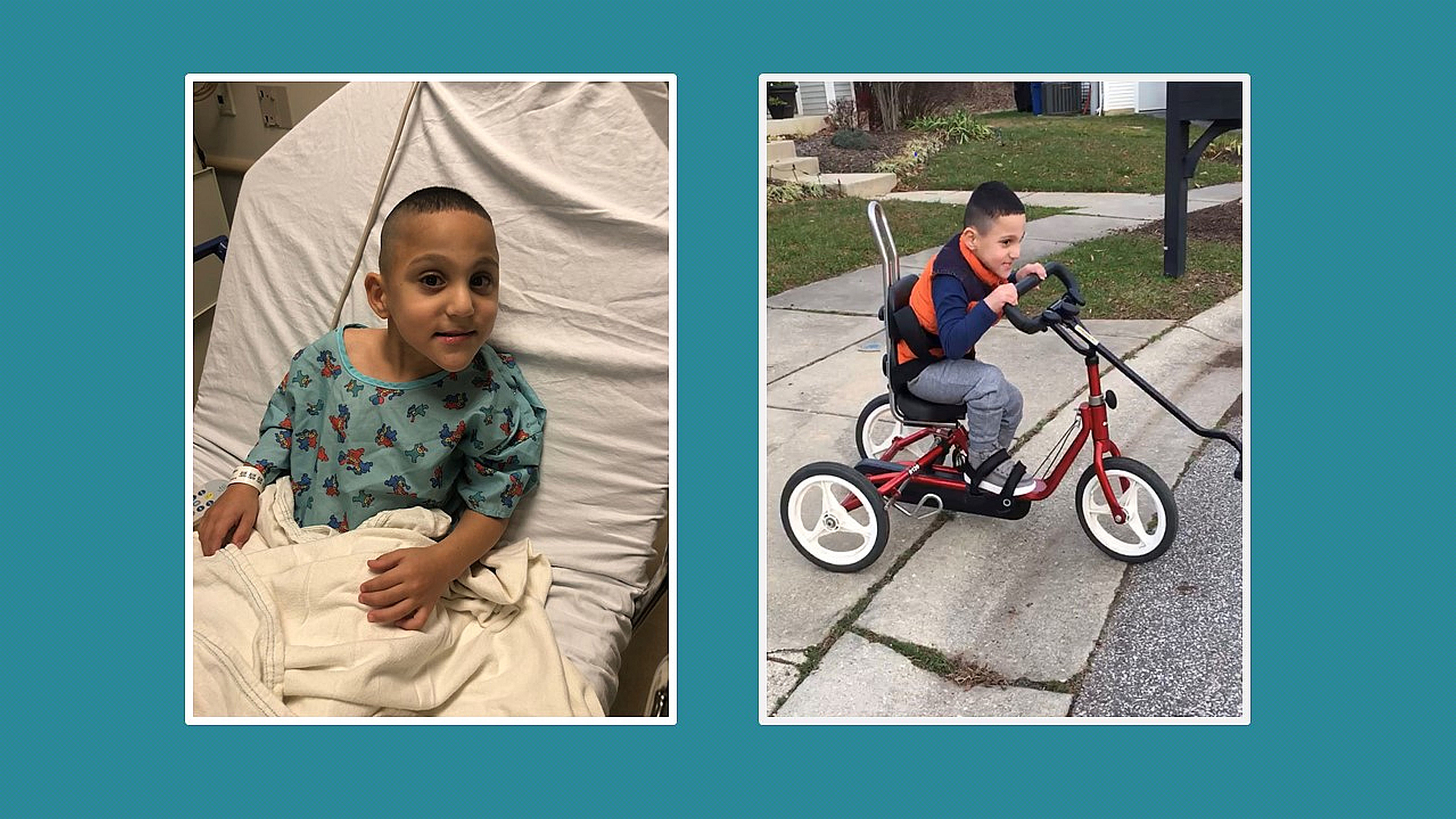Research Story Tip: Young Johns Hopkins Children’s Center Patient Makes Big Strides Living with Cerebral Palsy
03/17/2021

Six-year-old Armando Real Cintron is sweet, funny and a real “ball of life” known for his captivating smile, according to his mom, Nicole Real. She also calls him a warrior.
Born prematurely at 24 weeks, Armando’s tiny body weighed only 28 ounces. He spent the first months of life in the neonatal intensive care unit at a Maryland hospital until his major organs could fully mature. As he grew following his return home, Armando’s parents noticed delays in his development. First, he was unable to hold a bottle. Then, he couldn’t open items like an applesauce pouch or yogurt container. Finally, his condition worsened until he was unable to walk.
At the age of 1 year, Armando was diagnosed with cerebral palsy (CP).
CP is a congenital condition caused by abnormal development of or injury to a baby’s brain that affects his or her ability to control movements. According to the U.S. Centers for Disease Control and Prevention, 1 in 345 children in the United States have CP, making it the most common pediatric motor disability. Symptoms can range from mild to severe. Early signs of the disorder include body stiffness, floppiness and difficulty with hand or leg movement. Mild cases of CP might cause a person to walk with some difficulty; more severe disease can make it impossible to walk at all.
Armando’s condition is called spastic diplegia, a type of CP that leads to consistently high levels of muscle tightness or stiffness in the legs. His parents started him on physical and occupational therapy at an early age to assist his progress, which eventually enabled him to crawl.
Around age 3, Armando came to Johns Hopkins Children’s Center (JHCC) and Kennedy Krieger Institute, where he began receiving care from a team specializing in cerebral palsy. The group consisted of health care professionals from numerous disciplines, including neurosurgery, orthopaedics, rehabilitation, neurology and physical therapy. Following several procedures at JHCC over the next two years to help loosen his muscles, paired with continued therapy at JHCC and Kennedy Krieger, Armando was able to sit and use a wheelchair. With more work, he was able to be move about in a mobile stander, and eventually, with a walker.
In September 2020, at the age of 6, Armando underwent selective dorsal rhizotomy surgery to improve his mobility, reduce pain and relieve spasticity (a condition in which muscles stiffen or tighten, preventing normal fluid movement) in his legs. During the three-hour surgery, Shenandoah "Dody" Robinson, M.D., a pediatric neurosurgeon at JHCC and professor of neurosurgery at the Johns Hopkins University School of Medicine, removed a problem vertebrae and tested neurons to find and remove those that weren’t working properly.
After this surgery, patients must relearn how to use their muscles — even for small actions — such as lifting their heads and moving their mouths. Armando "was like a noodle” following the procedure, recalls Real. Four days recovery at JHCC and weeks of intensive therapy at Kennedy Krieger enabled Armando to build enough strength to go home.
Now months later, Armando can do many previously impossible movements, although he still cannot independently use a walker. He can stand for long periods flat-footed, raise his arms above his head, go from sitting to standing flat on his feet, hold a cup and use utensils, and enjoy childhood pleasures such as riding an adaptive tricycle.
“He’s much looser than before surgery,” says Real. “From being able to step side-to-side to using scissors to cut a straight line, he has made tremendous gains.”
Real also is hopeful that Armando will be able to walk one day.
“He’s got the drive. He just needs to get strong enough,” she says. “With his determination, he’ll definitely get there one day. We are going to afford him the best opportunity to get to that state.”
In addition to offering care in partnership with Kennedy Krieger, the CP team at JHCC collaborates with Baltimore’s Mt. Washington Pediatric Hospital to provide comprehensive and innovative care to individuals with the disease.
Armando, his mother and Robinson are available for media interviews.
March is designated as Cerebral Palsy Awareness Month.
